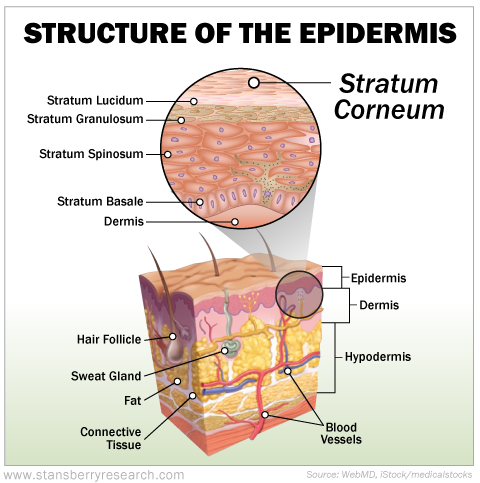Epsom salts are everywhere...
At the grocery store... the drug store... Just search online and you'll find dozens of different kinds to choose from. You might even have some sitting in your bathroom cupboard right now.
Epsom salts are touted as this miracle cure for almost everything that ails you:
The name "Epsom salts" comes from the English town of Epsom where they were first discovered around 1618. The town folk claimed that the healing waters had the power to repair the sores on their skin and acted as a laxative when consumed.
One of my researchers and I both swear by Epsom salts...
After a workout that's particularly tough on my feet, I always soak in Epsom salts for 15 minutes. That 15 minutes is all my feet need to go from gnarled and sore to restored, soft, and relaxed. This practice is engrained in my routine.
In addition to healing, it's also something that I really enjoy... The warm silky water relaxes me, as does the lavender essential oil that's in my preferred blend of salts.
Some sources report that Epsom salts are a nearly $2 billion industry.
So, we decided to dig into some of the science behind them...
One reason we think Epsom salts are so beneficial is because of the high magnesium concentration. Regular readers and paid subscribers have heard me share information about how great magnesium is...
Magnesium is essential for regulating many of the body's processes: nerve and muscle function, blood sugar levels, blood pressure, bone production, protein synthesis, and DNA building. People who aren't getting enough magnesium in their diets experience health issues like muscle weakness, depression, high blood pressure, or heart disease.
We're struck by the fact that after hundreds of years, there's really no solid science to explain the specific benefits of Epsom salts when it's used on the skin. We know something happens, we're just not sure how.
Many people – from doctors to health "experts" to grandmothers everywhere – claim that the magnesium and sulfur dissolve when placed in water and then get absorbed through the skin and into the body, but there is little evidence for this.
Turns out, our skin is a pretty impermeable barrier... That's its main job – keeping the external environment out of the body and the internal components in.
The top layer of skin is called the epidermis and the top layer of the epidermis is called the stratum corneum. The stratum corneum is made up of 15 to 20 layers of dead cells – called corneocytes – that form a watertight barrier. To get through the skin, an element must be absorbed by either the sweat glands or hair follicles, or it must be able to dissolve the fat-based webbing that the corneocytes are embedded in.
The dissolved magnesium from Epsom salts is not able to penetrate this fatty matrix. And given the fact that hair follicles and sweat glands only make up between 0.1% and 1% of the skin's surface, the magnesium absorbed through those routes would be in tiny amounts.
Still, there's research from the magnesium community. In 2004, a small study was done in which the researchers measured magnesium levels in participants before and after taking a 12-minute Epsom salts bath. Testing was conducted over a seven-day period and reportedly 16 of the 19 subjects were shown to have elevated magnesium levels in their systems after taking the Epsom salts bath.
This study, however, was not published in a peer-reviewed journal and has not been replicated. And there's an obvious bias. Companies that want to sell magnesium have a huge incentive to show it improves your health. This generally raises a few eyebrows in the world of science. And yet, this single study is often referenced when folks tout the benefits of Epsom salts.
That being said, bathing in Epsom salts is not harmful – and quite honestly, I don't really care if it's the warm water, the magnesium, or both together that relax me... And for those of you who have tried Epsom salts, I love the texture of my skin after a bath... it softens and provides a nice natural exfoliant.
So, if you enjoy using them, keep it up. Just know that anyone claiming that your body is absorbing tons of magnesium hasn't done their homework. And remember the best way to get magnesium in your body is by eating green leafy vegetables!
What We're Interneting...
- The history of Epsom salts.
- Something different: Paleontologists find 3.58-million-year-old ground sloth fossil.
Here's to our health, wealth, and a great retirement,
Dr. David Eifrig and the Health & Wealth Bulletin Research Team
February 16, 2021


